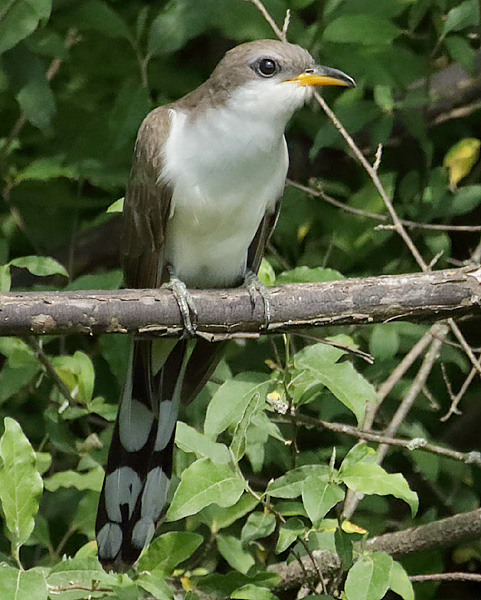
Yellow-billed Cuckoo
Walt Childs and I had planned to go to the Blue Grass Valley in Highland County to look for Golden-winged Warblers and possible hybrids with Blue-winged Warblers. Dominent gene hybrids of these two species are known a Brewster's Warblers, and the rarer recessive gene hybrids are known as Lawrence's Warblers.
However, on June 3, Diane Lepkowski reported that she and Greg Moyers had spotted a GWWxBWW hybrid singing a BWW song on Cowpasture Rd. south of Route 250 in Highland County. Her photos appeared to show a Lawrence's Warbler backcrossed with a GWW. I contacted Diane and she said the location was about 1/2 mile north of where a friend of mine lived on Cowpasture Road. In previous years, I had seen GWW and BWW, as well as other warbler species, along the road near his house.
So, Walt and I decided to look for the Lawrence's Warbler that Diane had reported, and then continue on to the Blue Grass Valley. We exited Route 250 onto Route 616, and took it to the small bridge that crosses over the Cowpasture River, and then turned left onto Route 614 (Cowpasture Road). Just after making the turn, we stopped to view a Yellow-billed Cuckoo preening itself in the morning sunshine.

Yellow-billed Cuckoo
When we got to the location where Diane had seen the Lawrence's Warbler, we stopped the car and I immediately heard a Blue-winged Warbler song. All of the birds were high up in the trees, and as typical with warblers, were not staying put. We saw at least three small birds that were acting like warblers, and I was able to get a few photos. One of them was clearly the Lawrence's Warbler backcrossed with a GWW, but I didn't realize it at the time. Notice the yellow upper breast.
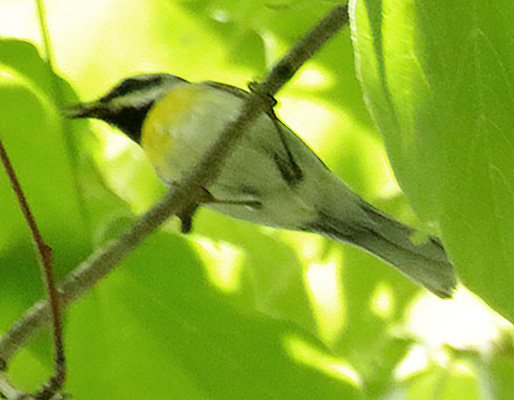
Lawrence's Warbler
I then got photos of another one of the warblers, or possibly the same one as in the previous photo. It was higher up in a nearby tree, and I could only see its backside. It was singing, but I could only hear a BWW song, although my high-frequency hearing is good enough to hear GWW songs that I have heard during previous GWW sightings. When I started processing these photos, I noticed an olive patch on the back of the bird, and read that an olive patch can be seen in the middle of a GWW back instead of the usual all-gray back. I don't know if this warbler was a pure GWW or a hybrid. If all three warblers were siblings, it is possible that all of them were hybrids.
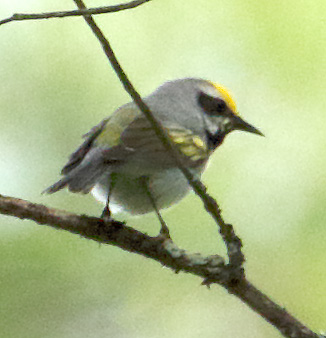
Golden-winged Warbler or possible hybrid

Golden-winged Warbler or possible hybrid

Golden-winged Warbler or possible hybrid
After a few minutes, we decided to head down to my friend's house, and then try agin for the Lawrence's Warbler on our return. We only saw a few birds near his house, and one of them was a Northern Parula that flew and perched right in front of me.
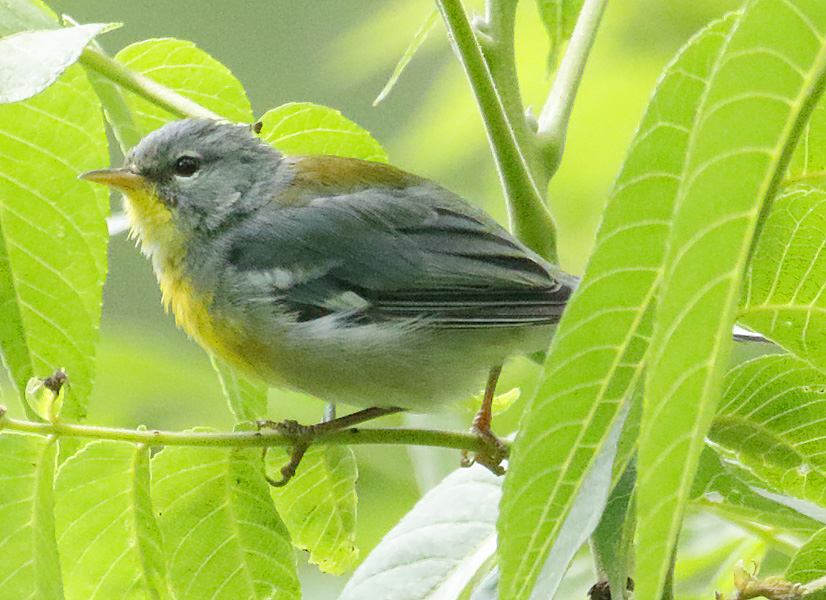
Northern Parula
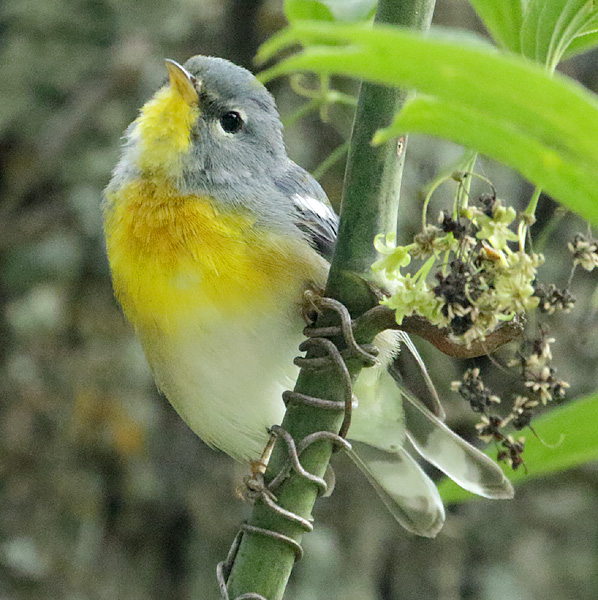
Northern Parula
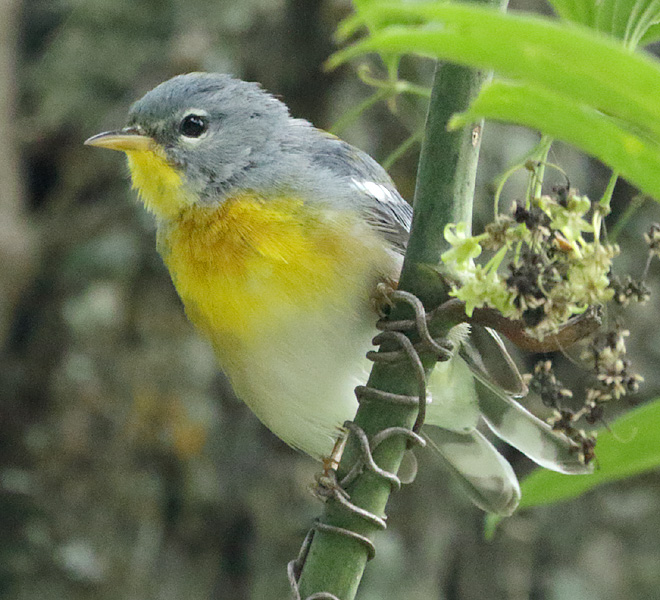
Northern Parula
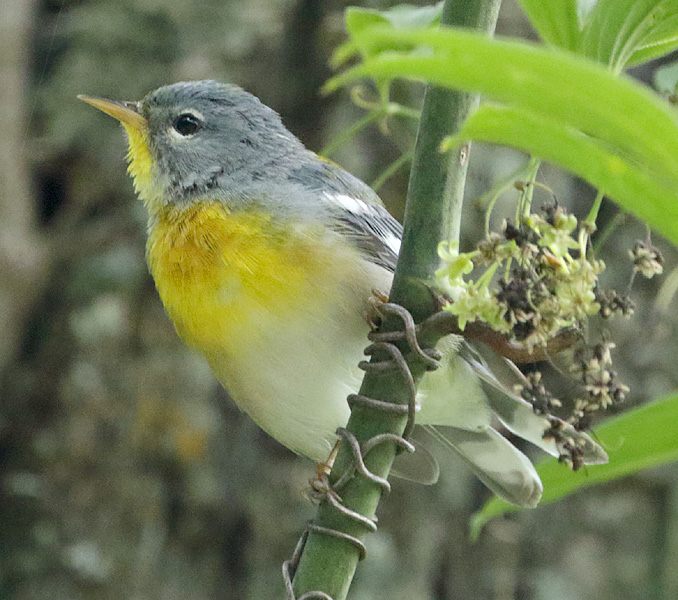
Northern Parula
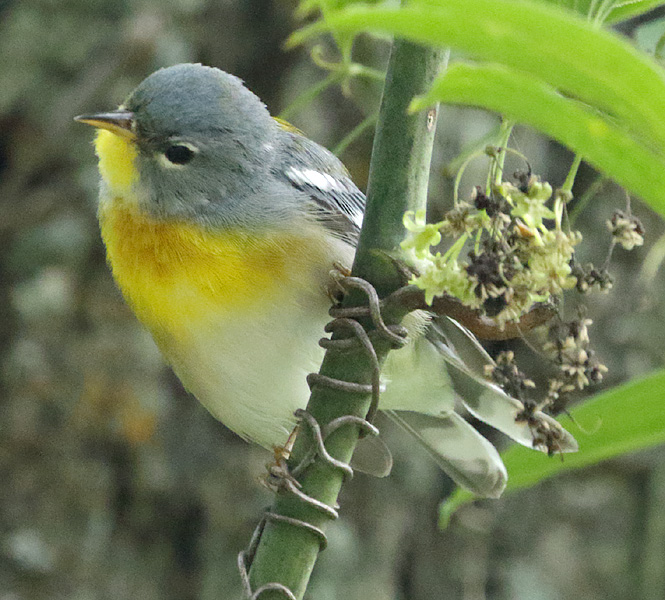
Northern Parula
We stopped again 1/2 mile to the north, and there were birds everywhere. The Lawrence's Warbler reappeared for some closer views.

Lawrence's Warbler
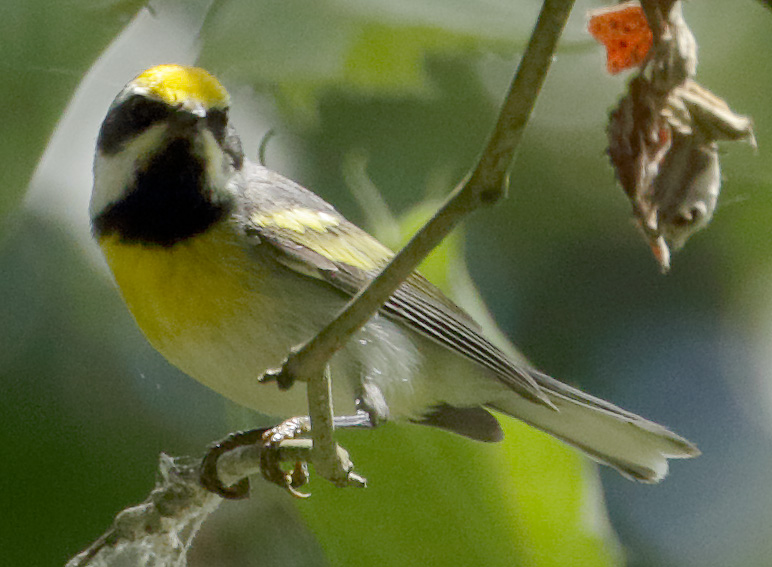
Lawrence's Warbler
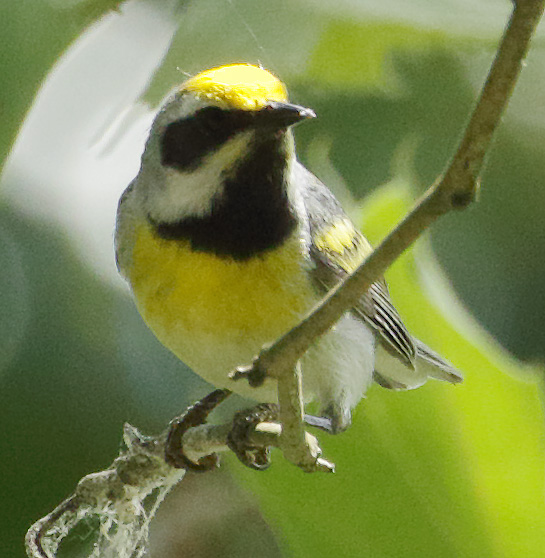
Lawrence's Warbler
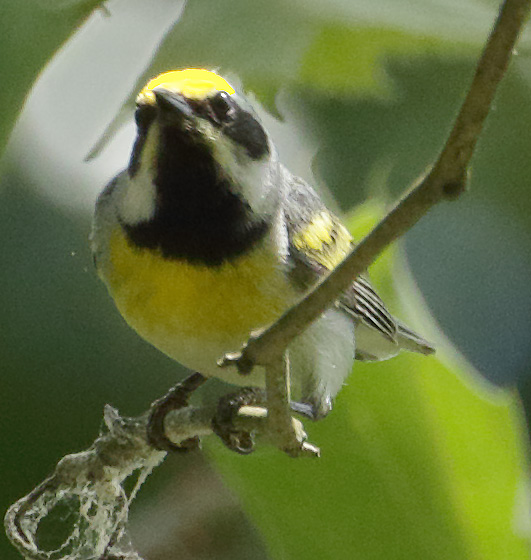
Lawrence's Warbler
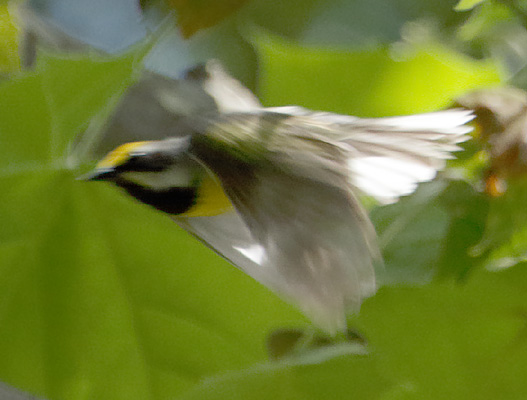
Lawrence's Warbler
There was a small tree across the road, and birds were flying in and out of it continuously, with as many as five species in the same tree at the same time. I saw a male and a female American Redstart, and Tufted Titmouse, a Black-capped Chickadee, an Indigo Bunting, a Red-eyed Vireo, a Blue-gray Gnatcatcher, and an Eastern Towhee. Walt some of these species, a female Golden-winged Warbler, and possibly a Blue Grosbeak.
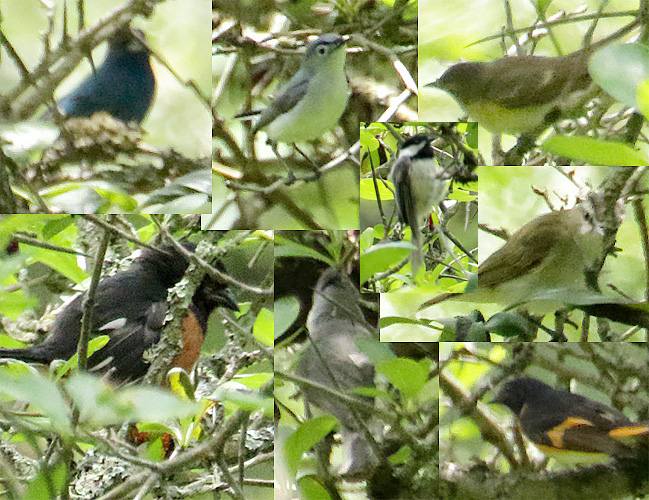
Multiple species
In nearby trees, I spotted a White-eyed Vireo and a Worm-eating Warbler.
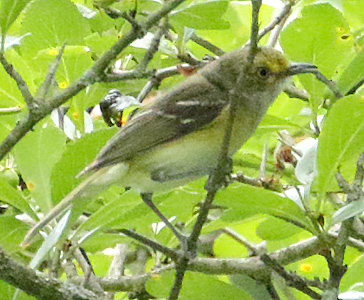
White-eyed Vireo
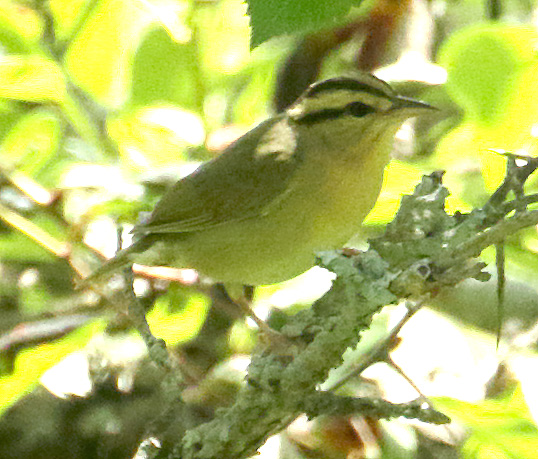
Worm-eating Warbler
We decided to skip going farther west to the Blue Grass Valley, and instead, continued north of Route 250, and then head east over Reddish Knob. Along the way, we saw a pair of Mourning Doves that looked unusual, but it was probably just the way the sunlight was catching their neck feathers.

Mourning Dove
We drove up Reddish Knob from the West Virginia side, saw a Blackburnian Warbler, heard Blue-headed Vireos, Ovenbirds, Black-throated Green and Black-throated Blue Warblers, and possibly a few other warbler species.
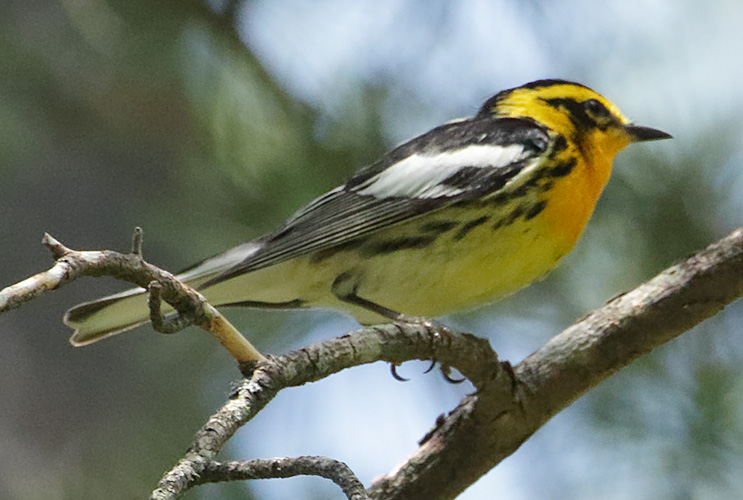
Blackburnian Warbler
After descending down the Virginia side of Reddish Knob, we saw a few more species at Nazarene Wetlands, and then a Belted Kingfisher and some Purple Martins, and ended the day's trip with 55 avian species.
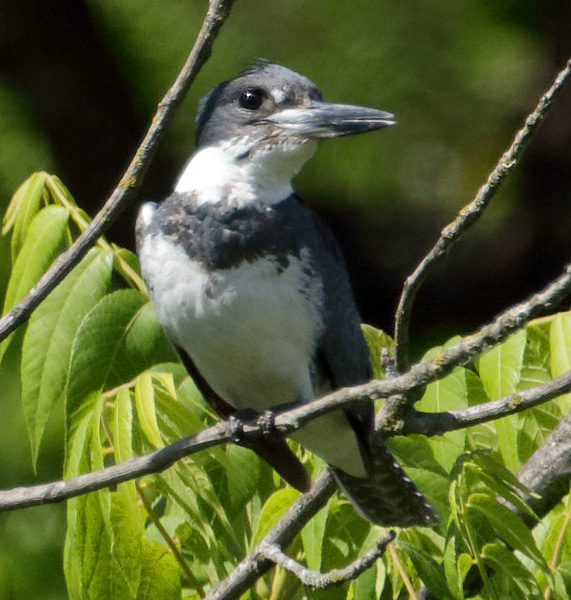
Belted Kingfisher
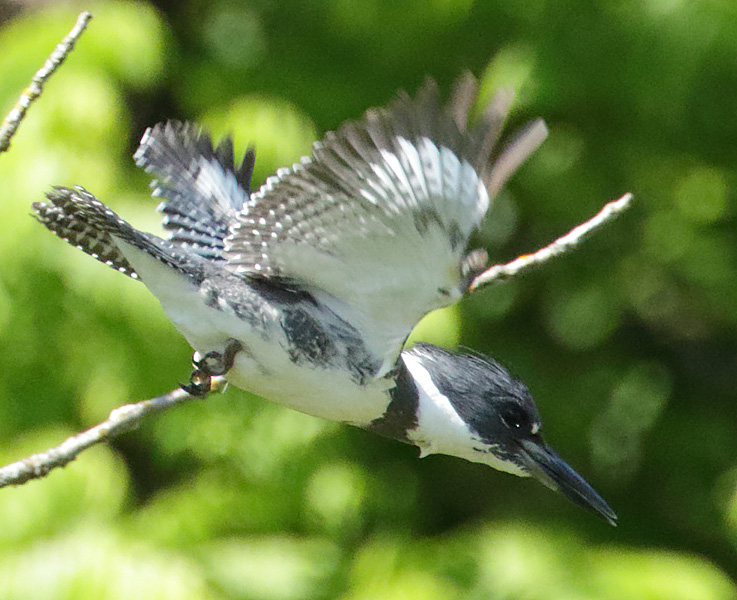
Belted Kingfisher
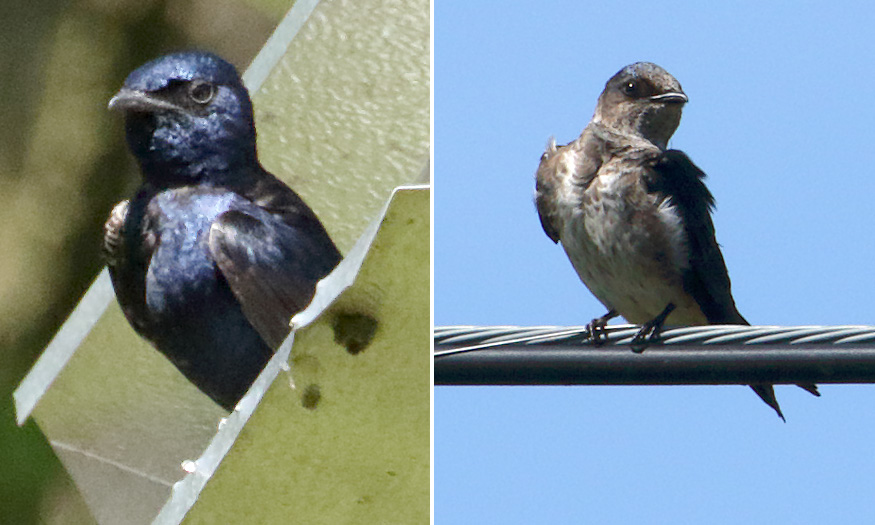
Purple Martins